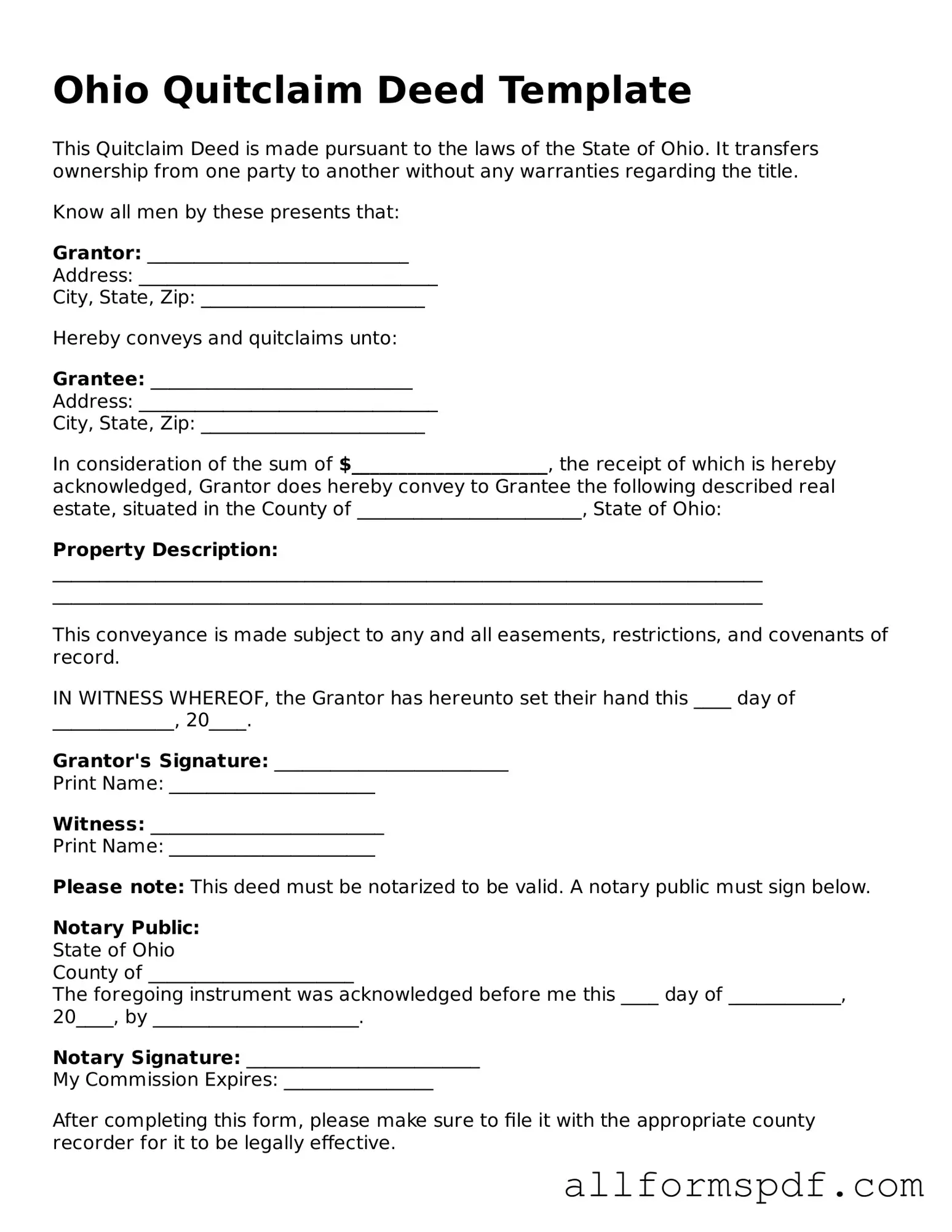Filling out the Ohio Quitclaim Deed form can be straightforward, but many people make common mistakes that can lead to issues down the line. Understanding these mistakes can help ensure a smoother process.
One common error is not including the correct legal description of the property. The legal description should be precise and detailed. Omitting this information can create confusion about the property being transferred.
Another frequent mistake is failing to sign the document. A Quitclaim Deed must be signed by the grantor, the person transferring the property. Without a signature, the deed is not valid.
Many individuals also overlook the need for notarization. In Ohio, a Quitclaim Deed must be notarized to be legally binding. Not having a notary public witness the signing can invalidate the deed.
Some people mistakenly use outdated forms. It's important to ensure that you are using the most current version of the Quitclaim Deed form. Using an outdated form can lead to legal complications.
Another mistake is not providing the correct grantee information. The grantee is the person receiving the property. If their name is misspelled or incomplete, it can create problems with the transfer.
People often forget to include the date of the transfer. This date is essential for record-keeping and can affect the legality of the deed. Always double-check that the date is clearly stated.
Inaccurate tax parcel numbers can also cause issues. These numbers help identify the property in tax records. Make sure to verify the tax parcel number before submitting the deed.
Some individuals neglect to check for any liens or encumbrances on the property. If there are outstanding debts tied to the property, these may affect the transfer. It’s wise to conduct a title search beforehand.
Finally, individuals sometimes fail to file the Quitclaim Deed with the appropriate county office. After completing the form, it’s crucial to file it with the county recorder to ensure the transfer is officially recognized.
